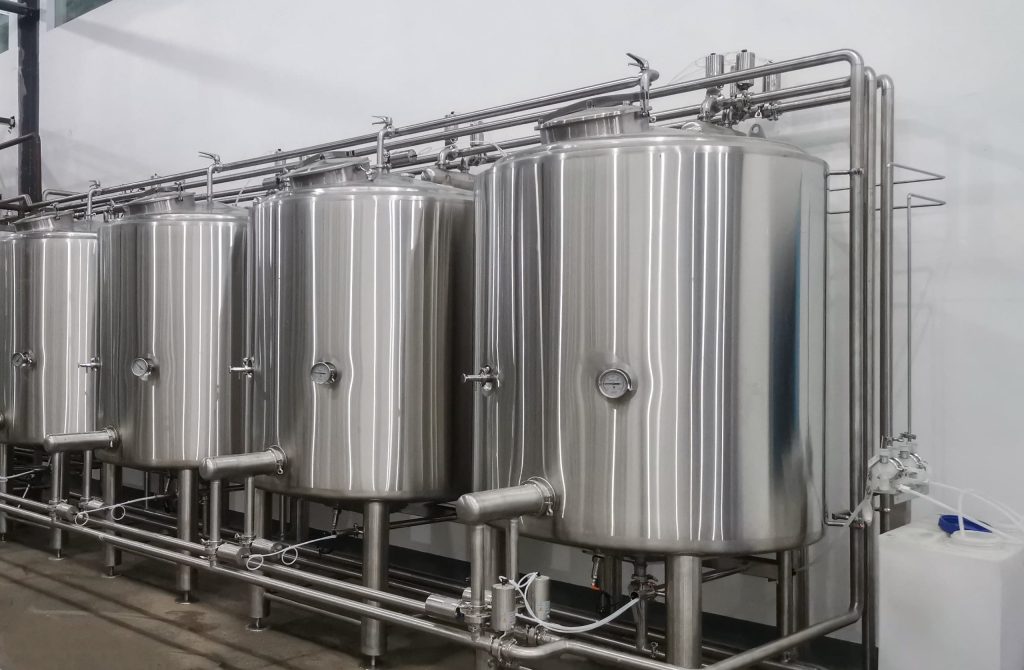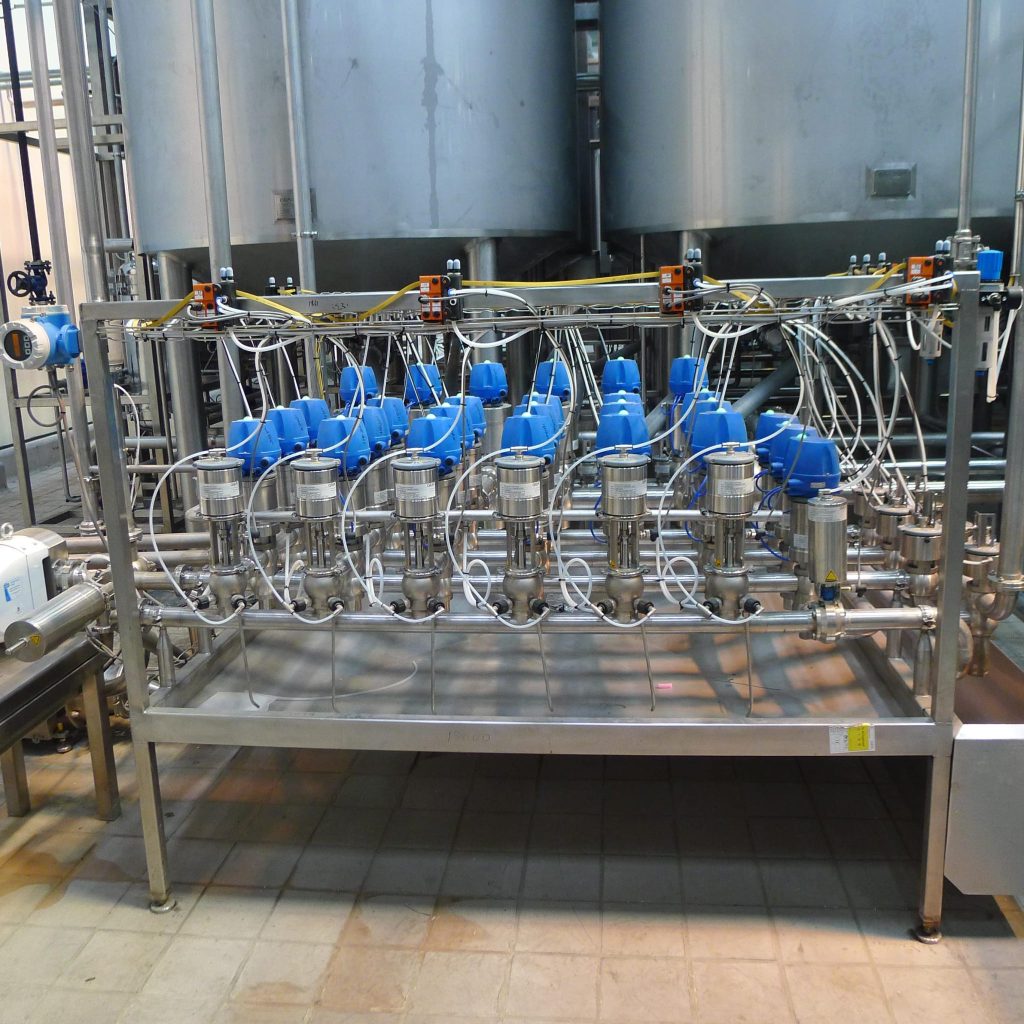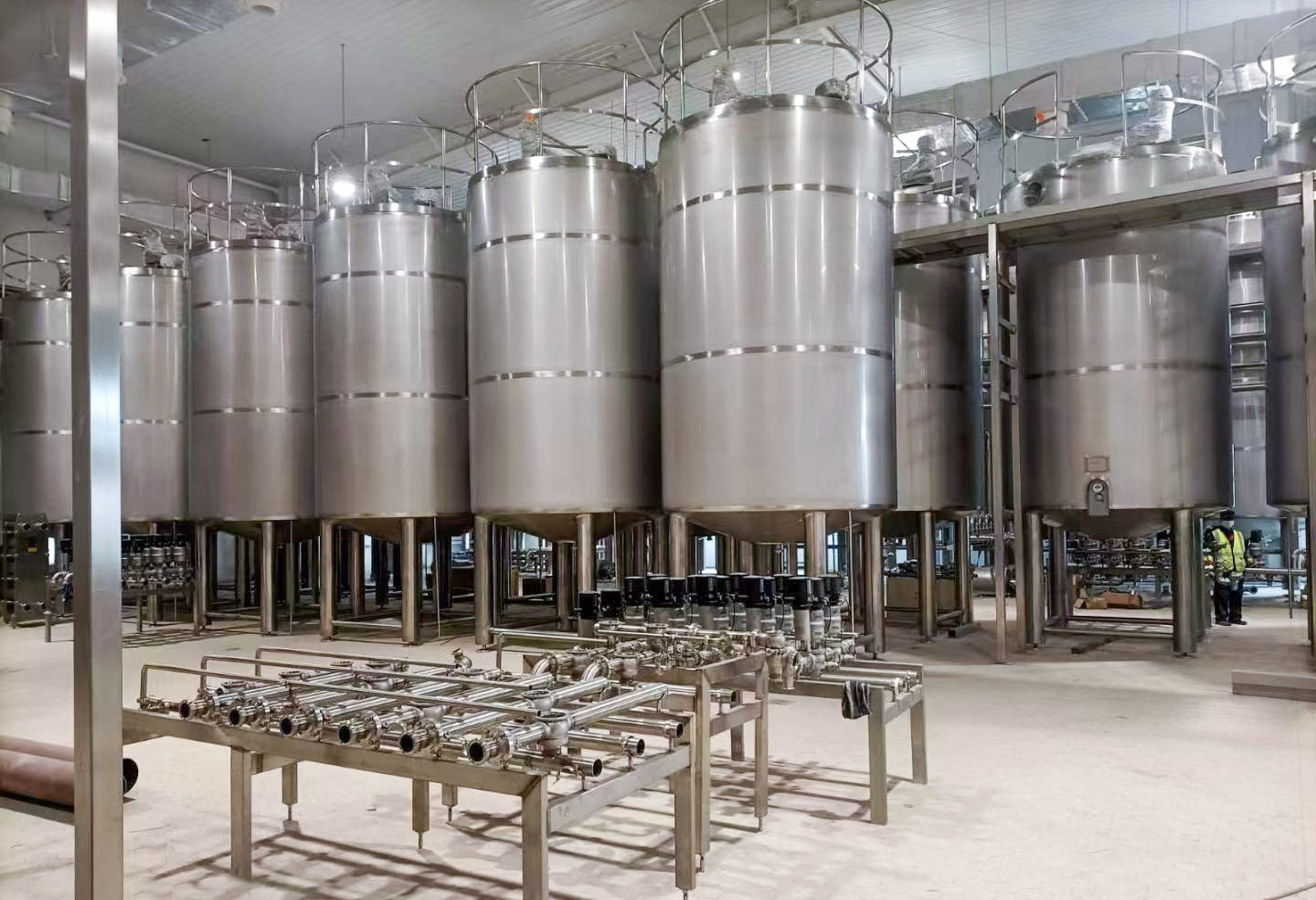導入

食品加工の分野では、製品の安全性と品質を確保するために、高い清浄度基準を維持することが極めて重要です。CIP (Clean in Place) システムは、これらの基準を効率的かつ効果的に達成する上で極めて重要な役割を果たします。このブログでは、食品加工施設における CIP システムの重要性について、そのコンポーネント、動作原理、利点、課題、ケース スタディなどについて詳細に説明します。
何ですか Clean in Place CIP Systems?
Clean in Place CIP systems are automated systems widely used in food processing plants to clean equipment and pipelines without the need for disassembly. This method ensures thorough cleaning and sanitation, crucial for preventing contamination between production runs.
CIPシステムのコンポーネント
CIP systems typically include several key components:
- Cleaning Solution Tanks: These hold the detergents and sanitizers used for cleaning.
- パンプス: Essential for circulating the cleaning solutions through the equipment.
- 熱交換器: Help in maintaining optimal temperatures for effective cleaning.
- バルブ: Control the flow of cleaning solutions and water.
- Sensors and Controls: Monitor and regulate the cleaning process.
Operation Principles
CIP systems operate on a series of well-defined principles:
- Pre-rinse: Removes residual product and debris from the equipment.
- クリーニング: Uses detergent solutions to dissolve soils and contaminants.
- リンス: Flushes out the cleaning solutions and loosened soils.
- 消毒: Applies sanitizers to eliminate remaining microbes and ensure equipment is safe for the next production cycle.
の重要性 CIPシステム in Food Processing
Ensuring Food Safety
Maintaining clean equipment through CIP systems is critical for preventing microbial contamination. Proper sanitation helps ensure that food products meet safety standards and are safe for consumption.
Enhancing Efficiency
CIP systems streamline the cleaning process, reducing downtime between production runs. This efficiency improvement allows for more continuous production schedules and optimal equipment utilization.
Meeting Regulatory Standards
Compliance with stringent hygiene and sanitation regulations is facilitated by effective CIP systems. These systems provide consistent cleaning and disinfection, which are essential for regulatory approval and customer trust.
Challenges in Implementing CIPシステム
Validation and Verification
Ensuring that CIP systems are validated and verified to perform effectively can be challenging due to variations in equipment design and cleaning requirements. Validation involves demonstrating that the system consistently achieves the desired level of cleanliness.
水と化学物質の使用
Balancing the use of water and chemicals in CIP systems is essential to achieve effective cleaning without excessive resource consumption. Proper management of these resources is crucial for sustainability and cost control.
さまざまなタイプの比較 CIPシステム
| CIP System Type | 説明 | 利点 | デメリット |
|---|---|---|---|
| Single-Use CIP | Uses disposable components for each cleaning cycle, minimizing cross-contamination | Reduced risk of product contamination | 初期コストが高い |
| Recirculating CIP | Reuses cleaning solutions, circulating them through the system multiple times | Cost-effective for large-scale operations | Requires efficient filtration for reuse |
| Hybrid CIP | Combines aspects of single-use and recirculating systems, offering flexibility | Balance between cost and contamination risk | Complex to implement and maintain |
のメリット CIPシステム
時間の節約

Automated cleaning processes significantly reduce the time required for manual cleaning activities. This time savings translates into increased production uptime and operational efficiency.
コスト効率
By minimizing manual labor and reducing water and chemical usage, CIP systems contribute to overall cost savings for food processing facilities. The initial investment in CIP systems is often offset by long-term operational efficiencies and reduced maintenance costs.
結論
Clean in Place CIP systems are indispensable in modern food processing operations, ensuring compliance with hygiene standards, enhancing operational efficiency, and maintaining product integrity. While challenges such as validation and resource management exist, the benefits of implementing CIP systems far outweigh the initial investments. They play a crucial role in safeguarding food safety and meeting regulatory requirements, making them essential components of any food processing facility.
よくある質問
Q:主な機能は何ですか? clean in place CIP systems in food processing?
A:CIP systems automate the cleaning and sanitation of food processing equipment, ensuring hygiene and preventing cross-contamination between batches.
Q:How do clean in place clean in place CIP systems contribute to operational efficiency?
A:By reducing downtime associated with manual cleaning, Clean in place CIP systems enable more continuous production schedules and optimize equipment utilization.
Q:What are the key components of a typical CIPシステム?
A:Key components include cleaning solution tanks, pumps, heat exchangers, valves, and sensors, all working together to deliver effective cleaning and sanitation.
Q:What challenges are associated with implementing clean in place CIP systems?
A:Challenges include validating cleaning effectiveness across diverse equipment types and managing water and chemical usage to balance effectiveness and sustainability.
Q:どうすれば CIPシステム help in meeting regulatory standards?
A:CIP systems provide consistent cleaning and sanitization processes, essential for compliance with stringent food safety regulations and maintaining consumer confidence.

